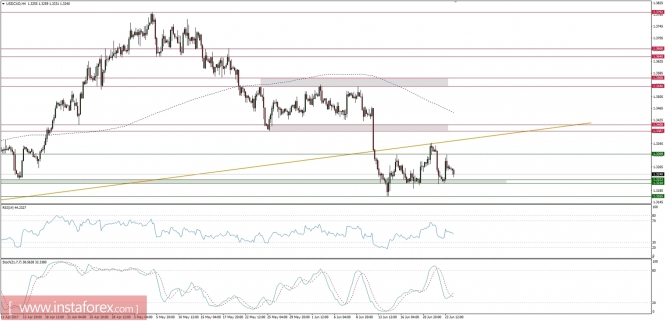Global macro overview for 26/06/2017:
The inflationary pressures in Canada are not rising fast enough. According to Statistics Canada report on Friday, Canadian consumer prices rose 0.1% in May following a 0.4% gain the previous month and lower than consensus forecasts of a 0.2% gain in the month. Moreover, the year-on-year rate declined to 1.3% from 1.6% and compared with expectations of a smaller decline in the rate of 1.5% for the month. The biggest increase was noted in food prices (0.6%), however, they still declined 0.1%. The biggest drop was noted on gasoline prices that fell 4.0%. The Bank of Canada CPI rate decreased from 1.6% to 1.5%, so it is still away from the Bank of Canada's inflationary target of 2.0%.
In its latest monetary policy statement, the Bank of Canada remained optimistic about the economic outlook and even started to consider whether all of the substantial monetary stimuli in the economy is still justified. This is why a rate hike by the end of this year remains on the table. The Bank has been holding rates at a record low of 0.50% since 2015 when it was forced to lower rates due to the sharp oil price fall. Currently, the CPI data will again ignite the speculation, whether any rate hike is still possible with the current low levels of inflation. If BoC does not hike at the next meeting in June, the Canadian dollar might depreciate even deeper across the board.
Let's now take a look at the USD/CAD technical picture on the H4 time frame. The market is trading sideways between the technical support at the level of 1.3222 and technical resistance at the level of 1.3309. Nevertheless, the most important levels for bulls and bears are the support at the level of 1.3165 and resistance at the level of 1.3408.

